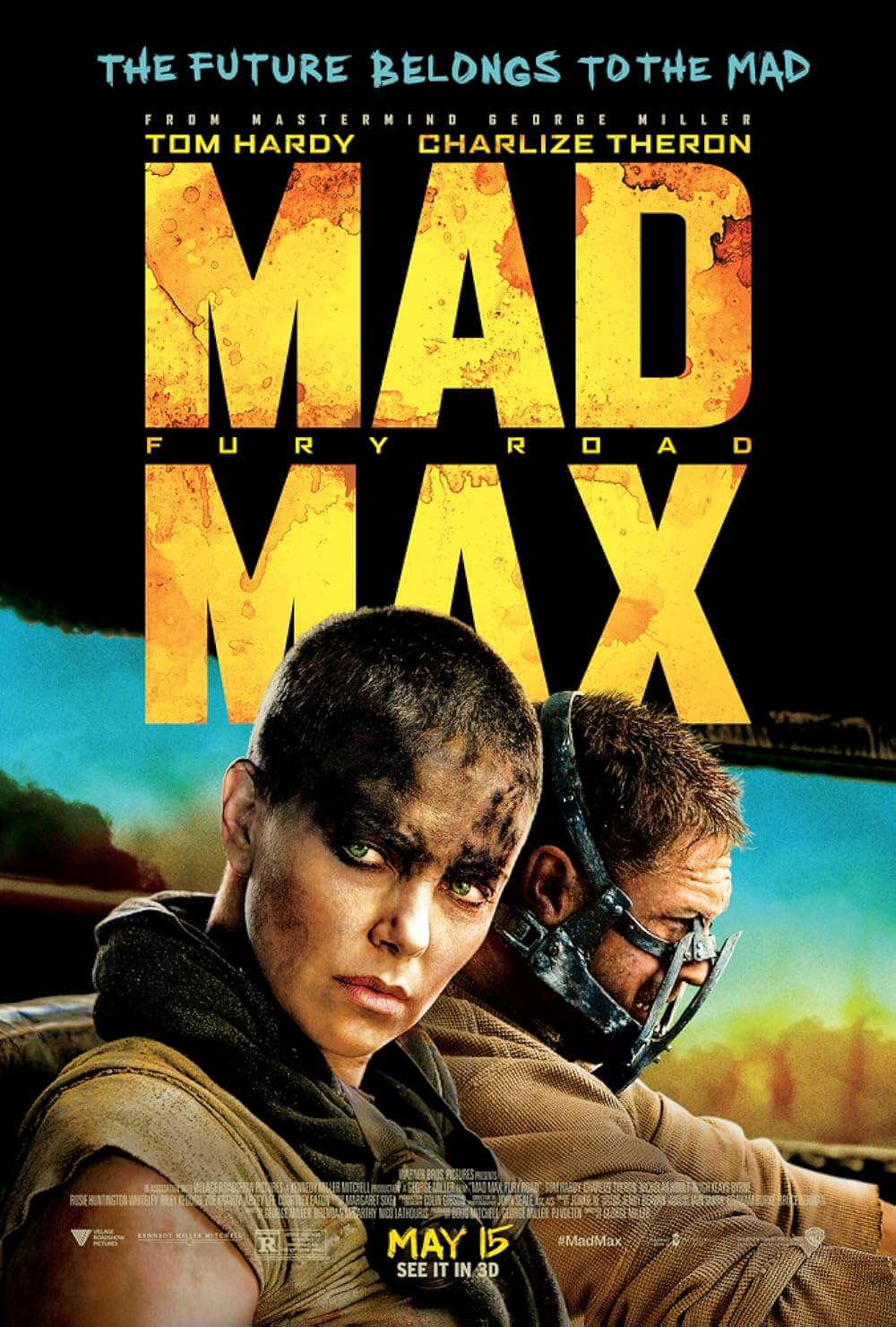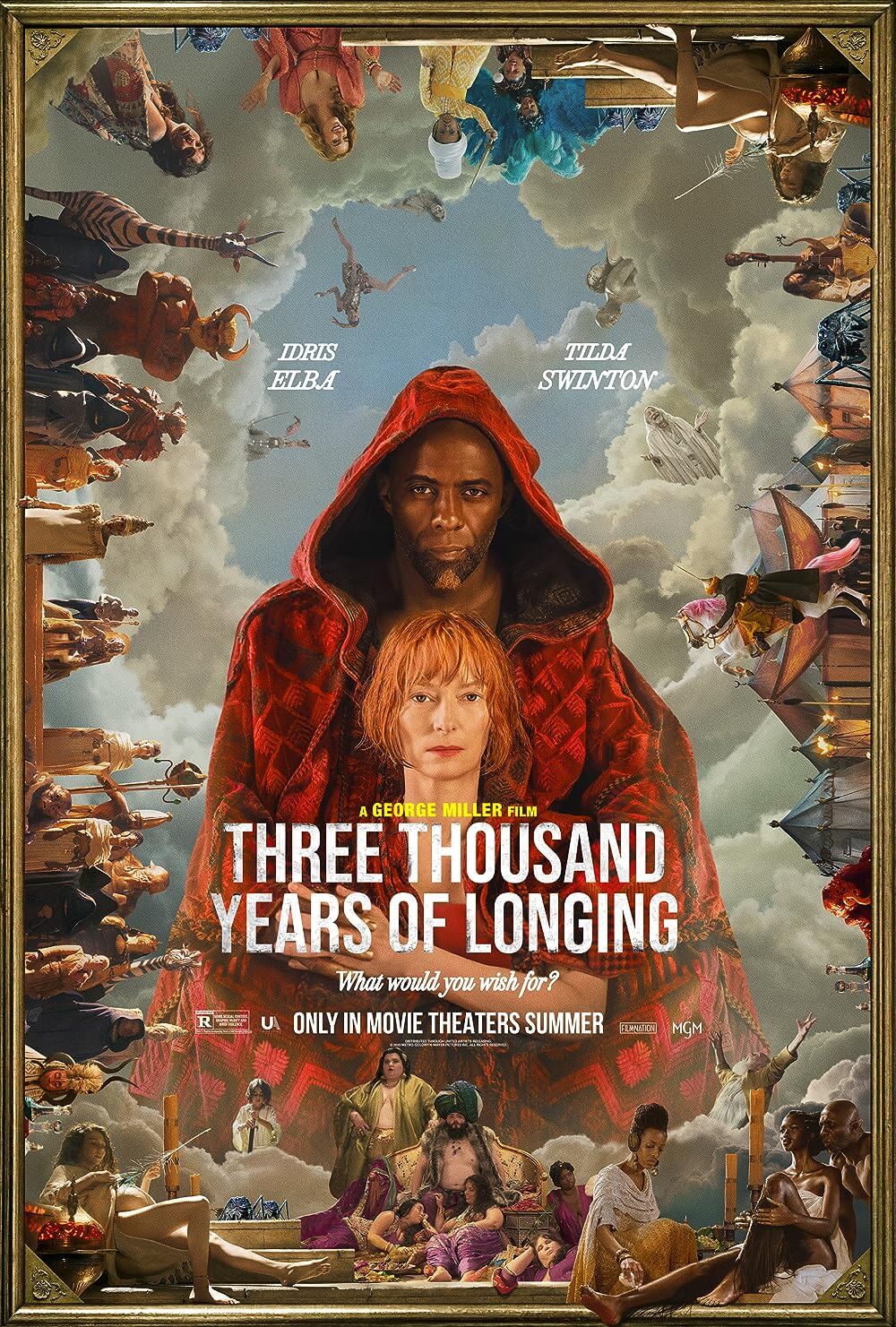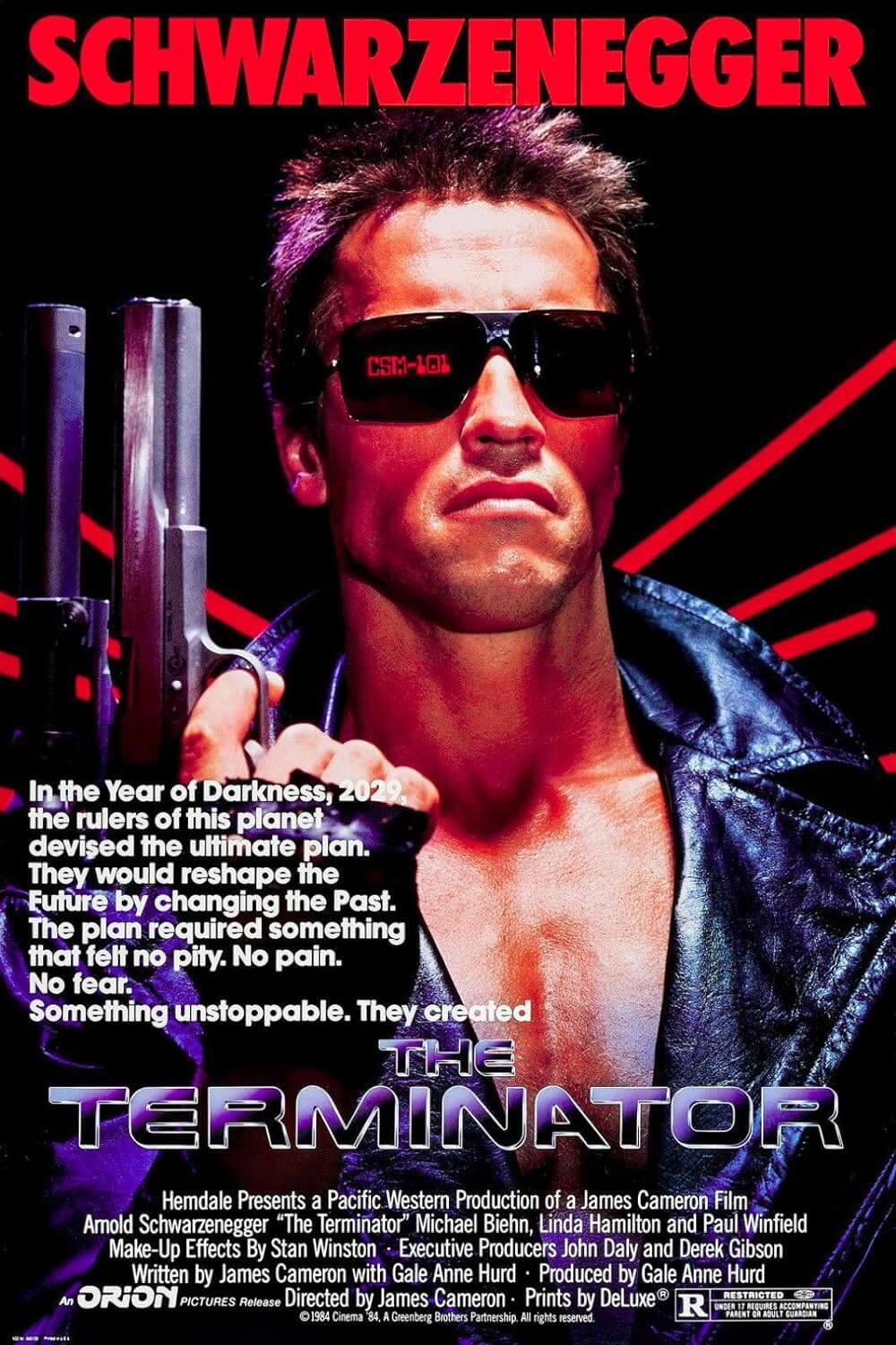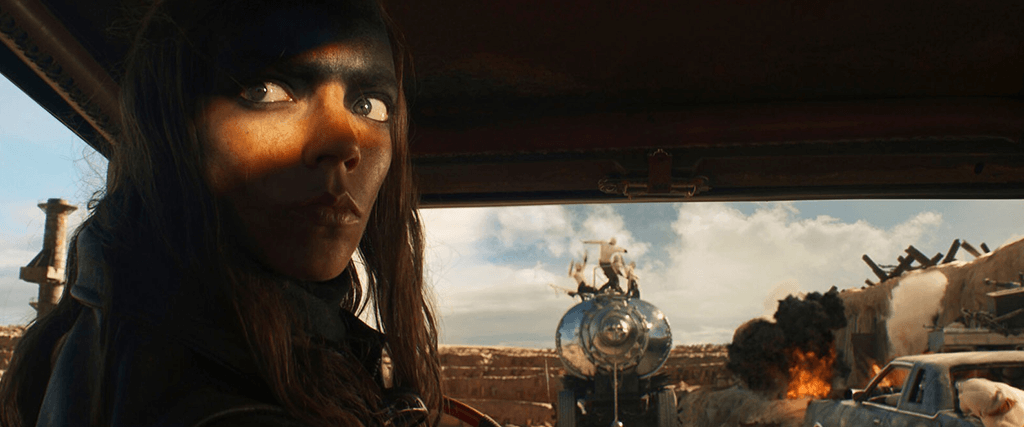
Furiosa: A Mad Max Saga
By Brian Eggert |
They say you can’t catch lightning in a bottle twice. George Miller calls bullshit on that with Furiosa: A Mad Max Saga, an audacious, wildly inventive, and deliriously thrilling prequel that complements Mad Max: Fury Road, its older sibling. One of the greatest action films ever made, Fury Road remains an overwhelming and widely celebrated legacy sequel—the gold standard for ambitious filmmaking, practical stunts, and pure cinema in the age of watered-down Hollywood franchises. The new film leads into the 2015 masterpiece, and the title is no exaggeration; it’s a saga that unfolds over several years. If Fury Road takes a straight route to freedom only to perform a U-turn back to salvation, Furiosa has a more patient approach, containing its narrative in several chapters on the familiar Australian terrain—the scorched Wasteland, festering with leather-clad raiders, zealous War Boys, power-mad warlords, and desperate heroes, all fed a diet of maggot protein, human-lizard sausage, and a few drops of water. It’s a nipple-ripping onslaught of, as one character describes, “purposeful savagery.” There’s no shortage of visceral and formal bravado at work, and yet Miller never loses sight of his character and her journey, deploying thematically rich material in a stunningly realized package.
No amount of hyperbole can capture the pure adrenaline rush of Miller’s ambitious visual storytelling. It’s all the more impressive that Miller made this film in his late 70s. He shows no signs of slowing. Whereas some directors’ output becomes more patient and reflective in their later years, such as Martin Scorsese with his meditative epic The Irishman (2019) and Killers of the Flower Moon (2023), Miller’s capacity for grandiose action set pieces, downright bizarre details, and spectacular showmanship remains unmatched. No wonder—he’s been thinking about making Furiosa almost since he first conceived of Fury Road in the late 1990s and enlisted actor Nico Lauthoris, who appeared in the original Mad Max (1979) as a mechanic, to help develop his ideas. Lauthoris specializes in dramaturgical analysis, and his efforts to investigate and flesh out characters for the 2015 film resulted in an extensive backstory project that eventually became the script for Furiosa. Miller and Lauthoris’ script, completed well over a decade ago, would be as thoroughly storyboarded as their work on Fury Road. Doubtlessly, that’s why the prequel pairs so naturally with its counterpart, despite nine years having passed between the two.
To be sure, Miller has had Furiosa on his mind for a long while. At various points throughout the last quarter-century, the director made plans to shoot Furiosa and Fury Road back to back; he even began developing Furiosa into an animated companion film, reminiscent of The Animatrix (2003). (For the full backstory about the development of both films, read Kyle Buchanan’s excellent book Blood, Sweat & Chrome: The Wild True Story of Mad Max: Fury Road.) But perhaps it’s appropriate that he took a break after Fury Road to make another, non-Mad Max film: the woefully underrated Three Thousand Years of Longing (2022). That film spans millennia and remains a cohesive piece of character work, maintaining its narrative integrity despite the temporal perspectives shifting several times. Miller takes a similar approach here, staging his saga over 15 years to explore the character originated by Charlize Theron. And while it’s somewhat disappointing that Miller chose not to bring Theron back, if only to avoid the distracting de-aging process, her replacement, Anya Taylor-Joy, embodies the character in all her defiance and rage.
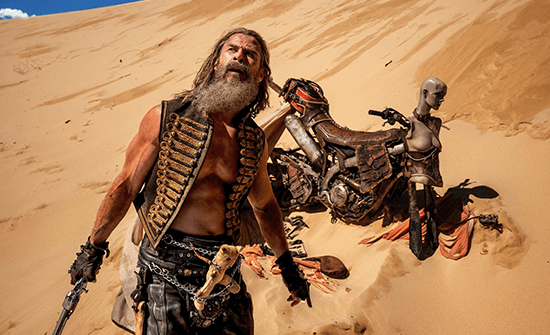 After the “terminal freak-out point” that ushered the fall of humanity, the young Furiosa (Alyla Browne) and her community of fierce women warriors live in an Eden-esque cradle of life surrounded by desert and filled with trees, fruit, and clean water—a lavish “Place of Abundance” modeled after an Albert Bierstadt painting. When she’s kidnapped by a small posse of raiders, who intend to bring her back to their gang as proof of this lush green Arcadia, her mother (Charlee Fraser) pursues them. It’s partly to rescue her daughter, partly to do anything necessary to keep the location of their paradise a secret. Despite her putting up a good fight, Furiosa’s mother is overcome by the legion of bikers loyal to Dementus, played by Chris Hemsworth, who excels in playing charismatic psychos who feign benevolence (see him in 2018’s Bad Times at the El Royale). Here, Hemsworth disappears behind an initially goofy prosthetic nose and bushy beard that serve as an effective mask, making us forget the actor’s hero persona from the MCU for something more insidious, chaotic, destructive, and ultimately pathetic.
After the “terminal freak-out point” that ushered the fall of humanity, the young Furiosa (Alyla Browne) and her community of fierce women warriors live in an Eden-esque cradle of life surrounded by desert and filled with trees, fruit, and clean water—a lavish “Place of Abundance” modeled after an Albert Bierstadt painting. When she’s kidnapped by a small posse of raiders, who intend to bring her back to their gang as proof of this lush green Arcadia, her mother (Charlee Fraser) pursues them. It’s partly to rescue her daughter, partly to do anything necessary to keep the location of their paradise a secret. Despite her putting up a good fight, Furiosa’s mother is overcome by the legion of bikers loyal to Dementus, played by Chris Hemsworth, who excels in playing charismatic psychos who feign benevolence (see him in 2018’s Bad Times at the El Royale). Here, Hemsworth disappears behind an initially goofy prosthetic nose and bushy beard that serve as an effective mask, making us forget the actor’s hero persona from the MCU for something more insidious, chaotic, destructive, and ultimately pathetic.
While Furiosa continues to unravel over several years, Dementus remains a regular fixture, driving the story forward in his relentless pursuit to fill his internal emptiness. Carrying a small Teddy bear, which he claims belonged to his long-gone children, Dementus is a more monstrous and focused version of Max. Both lost families but responded differently: Max went into raw animal-brained survival mode, while Dementus channels his wounds into increasingly vile terror in an attempt to feel something, anything. At the same time, he acts like the savior of the Wasteland, a liberator of downtrodden people who wraps himself in a parachute cape and puts on a good show with his three-motorcycle chariot. But he’s just another petty egomaniac. Let the comparisons to modern-day politicians begin. Once he imprisons Furiosa in a cage, holding her prisoner to show her off as well-nurtured proof of paradise, our young hero must learn to survive under a despot. She receives some sage advice from The History Man (George Shevtsov), a wise old walking encyclopedia who covers his body in tattoos of written information. “Make yourself invaluable,” he tells her.
It’s an important lesson after Dementus clashes with the leaders of Gastown, the Bullet Farm, and the Citadel, the latter of which is run by Fury Road’s baddie, Immortan Joe (Lachy Hulme). Dementus negotiates a trade after taking over Gastown, handing over his makeshift daughter, Furiosa, whom he calls “Little D,” in exchange for power and resources. Immortan Joe plans to add Furiosa to his stock of breeder women, kept in a vault in his tower. But she soon escapes and disappears among the War Boys and Immortan Joe’s mutated children, pretending to be a boy to become a valued mechanic and fighter, trained by the kindly Praetorian Jack (Tom Burke). And given that the prequel operates in origin story mode, Furiosa offers a look at how she helped build Immortan Joe’s unstoppable War Rig, how she lost her arm and replaced it with a robotic appendage, and other elaborations. Most prequels tend to demystify and add nothing of value to what came before, but here, Miller defies the usual Hollywood mold by telling a story whose particulars never feel like a cash grab; instead, they feel like necessary components of an epic chronicle.
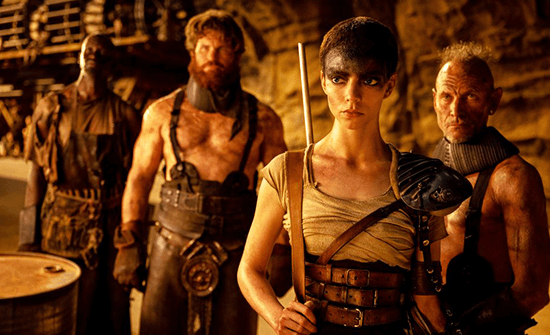 Of course, vital to Fury Road’s spectacle are its practical car crashes, stunts, and minimal use of CGI. Some remember the 2015 film as devoid of digital trickery, but it had plenty to render a massive sandstorm, scenes around the Citadel, and elsewhere. The same is true of Furiosa, which boasts several awe-inspiring pyrotechnical displays, vehicle crashes, and races through the Wasteland. A standout sequence involves one of Dementus’ generals, called The Octoboss (Goran Kleut), pursuing Furiosa and Jack in various contraptions—parasails, fan-powered gliders, goons with metal shoes who skate on sand, and a massive octopus-shaped kite that’s among the most memorable sights in the film. Although Miller uses more CGI here than in Fury Road, it’s negligible and hardly spoils the heightened moment-to-moment experience, thrust forward by Tom Holkenborg’s propulsive music. Along with cinematographer Simon Duggan, Miller fills his expressive canvas with bold colors, from orange-burned desert to blue-hued night scenes, resembling how silent films used to tint the otherwise monochrome celluloid depending on the scene. And sure enough, Furiosa is a film of few words, most of them spoken by the blustering Dementus. With dramatic fades to black and chapter titles throughout, Miller captures the historic scope of Furiosa’s journey.
Of course, vital to Fury Road’s spectacle are its practical car crashes, stunts, and minimal use of CGI. Some remember the 2015 film as devoid of digital trickery, but it had plenty to render a massive sandstorm, scenes around the Citadel, and elsewhere. The same is true of Furiosa, which boasts several awe-inspiring pyrotechnical displays, vehicle crashes, and races through the Wasteland. A standout sequence involves one of Dementus’ generals, called The Octoboss (Goran Kleut), pursuing Furiosa and Jack in various contraptions—parasails, fan-powered gliders, goons with metal shoes who skate on sand, and a massive octopus-shaped kite that’s among the most memorable sights in the film. Although Miller uses more CGI here than in Fury Road, it’s negligible and hardly spoils the heightened moment-to-moment experience, thrust forward by Tom Holkenborg’s propulsive music. Along with cinematographer Simon Duggan, Miller fills his expressive canvas with bold colors, from orange-burned desert to blue-hued night scenes, resembling how silent films used to tint the otherwise monochrome celluloid depending on the scene. And sure enough, Furiosa is a film of few words, most of them spoken by the blustering Dementus. With dramatic fades to black and chapter titles throughout, Miller captures the historic scope of Furiosa’s journey.
Miller is a master of visual storytelling, adopting a technique that defies the usual approach to Hollywood action movies—most productions use multiple cameras to capture the action so the editor has a variety of options depending on how the studio responds and test screening scores. But Miller’s elaborate pre-production storyboarding process conceives of every shot beforehand, informing how the action is staged and captured so that no shot feels out of place. This allows for elegant imagery, such as a storm blowing away a motorcycle’s trail in the sand, and also a cohesion to the film’s elaborate sequences. Even though the runtime of 148 minutes—nearly a half-hour longer than Fury Road—might suggest an unnecessarily protracted story, it races by with breakneck momentum, in part because Miller has spent years obsessing over every frame. What’s so refreshing about Furiosa is that Miller isn’t attempting to replicate the tone of Fury Road’s nonstop chase. Instead, he builds a mythology that he has already paid off with what follows. If there’s a single misstep, it’s the recap scenes from Fury Road cut into the end credits. But that mildly awkward choice hardly impacts the overall cinematic bliss on display.
Even though the story has several stops and pauses along the way, even a montage of a massive war between the warlord factions, Furiosa is a rush, all of it anchored by Taylor-Joy’s primal and cagey performance. Admittedly, I had unreasonably high expectations for Furiosa, and Miller met them by delivering a prequel of mad poetry that deepens and enhances an iconic character and the story to follow in Fury Road. Once again, the director achieves an unconventional, masterful piece of visual storytelling with a level of energy and momentum unmatched by any other filmmaker working today. Afterward, I was exhilarated and exhausted in the best ways, but also satisfied—a rare thing, given the usually underwhelming track record of most prequels. Miller’s film feels at once personal, morbid, and insanely visionary. It’s motivated by his gleeful love of vehicular mayhem and a clear affection for his creation, Furiosa. And her solo outing delivers in every way Fury Road fans could hope for, offering another all-timer action extravaganza that adds a worthy, standout installment to Miller’s post-apocalyptic series.
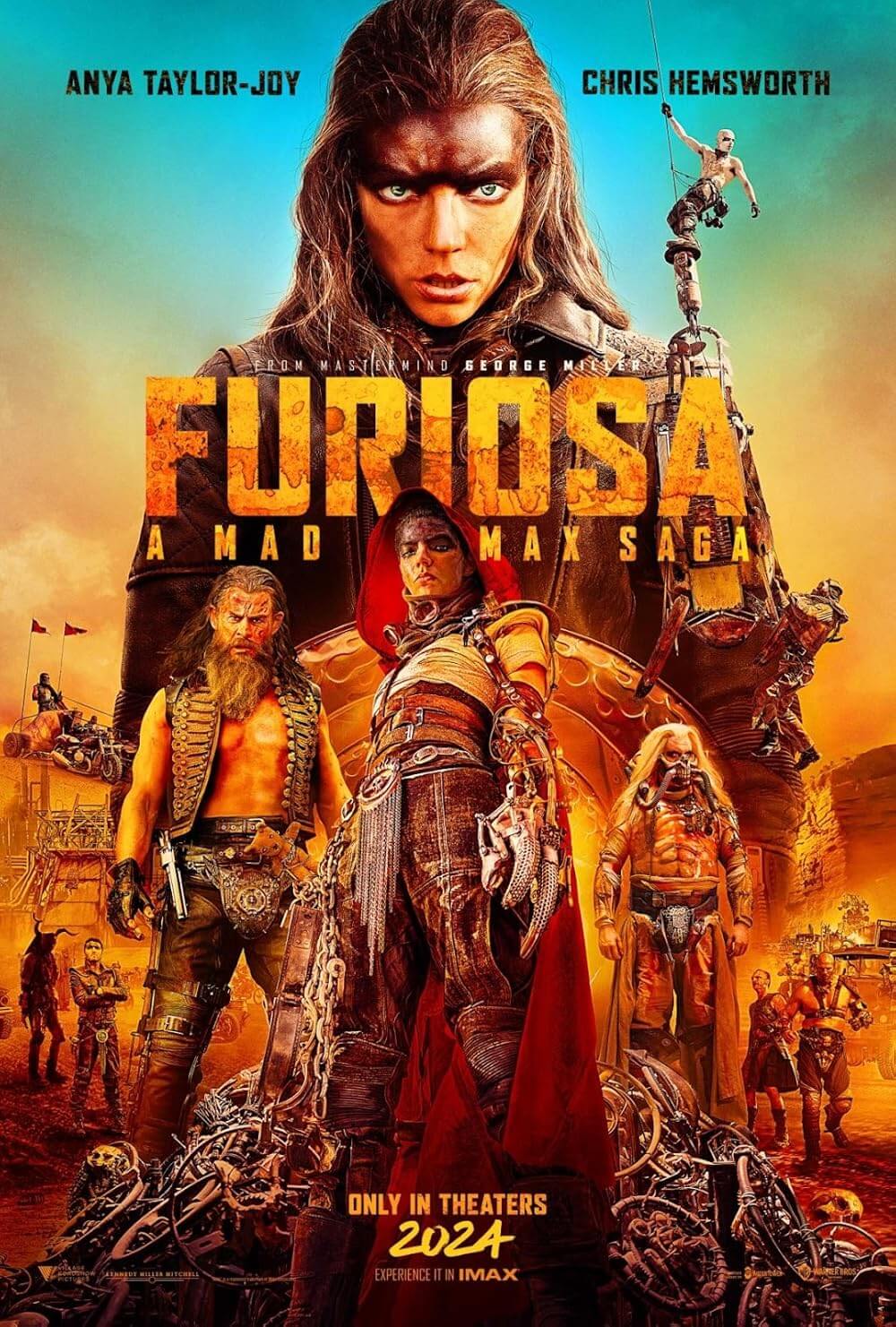
Unlock More from Deep Focus Review
To keep Deep Focus Review independent, I rely on the generous support of readers like you. By joining our Patreon community or making a one-time donation, you’ll help cover site maintenance and research materials so I can focus on creating more movie reviews and critical analysis. Patrons receive early access to reviews and essays, plus a closer connection to a community of fellow film lovers. If you value my work, please consider supporting DFR on Patreon or show your support in other ways.
Thank you for your readership!
Brian Eggert | Critic, Founder
Deep Focus Review


